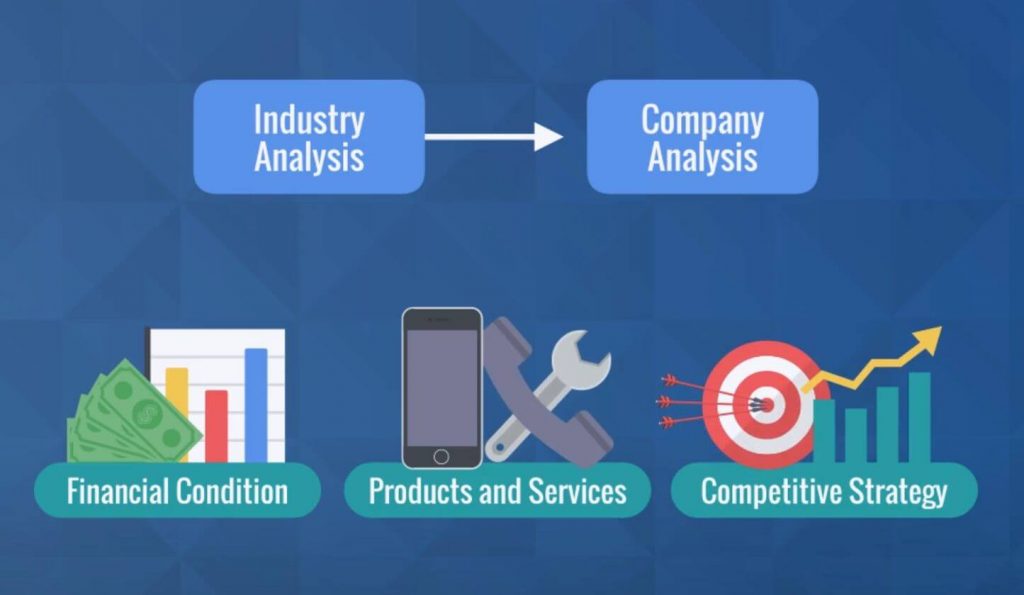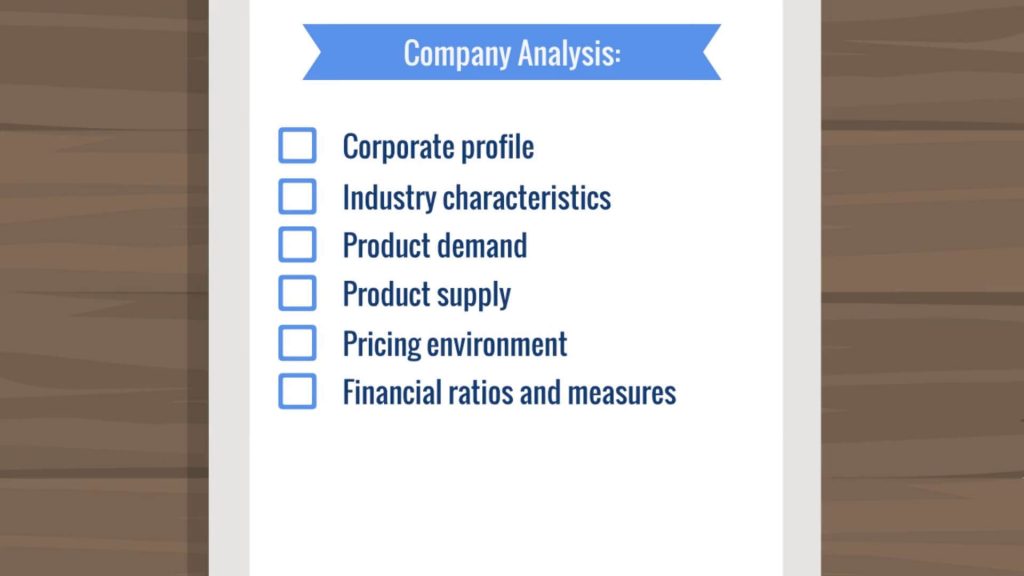Key Elements of Company Analysis
Join over 2 million professionals who advanced their finance careers with 365. Learn from instructors who have worked at Morgan Stanley, HSBC, PwC, and Coca-Cola and master accounting, financial analysis, investment banking, financial modeling, and more.
Start for Free
Company analysis (a.k.a. fundamental analysis) examines a firm’s financial condition, products and services, and competitive strategy. Typically, this allows us to better identify how an organization responds to external threats and opportunities. It contains basic information about the business and its underlying characteristics.

Elements of Company Analysis
A firm’s products and services, along with its financial condition and competitive strategies are all covered when conducting a thorough company analysis, which generally includes the following elements:

Corporate Profile outlines the firm’s main products or services and maps those that generate the most revenues. An important part of the initial step is examining the governance of the entity, including factors such as board organization, composition, and anti-takeover provision. Then, we need to find the product’s position on the experience curve. As we know, the cost of producing a good or service declines with cumulative output. Economies of scale, remember?
Industry characteristics involve digging further into the stage of a firm’s life cycle, the intensity of competition, as well as the barriers to entry and exit. Don’t forget that you also need to figure out whether the industry is fragmented or concentrated. Besides, you should look at the brand loyalty and customer switching costs. Can the company differentiate its products, or should its strategy be based on lowering its production costs? Make sure you find that out. External factors such as Technology disruptions and regulatory concerns are also part of this stage.
Product demand considers the demand for a company’s products. We identify the different sources of demand and the outlook of a firm’s existing and future products.
Product supply covers the supply aspect of product delivery. Here, you focus on the industry capacity and its prospects. What’s the industry competition? Are there any substitute products? These are some of the questions you need to work on.
The pricing environment has to do with analyzing the input costs and the selling prices. Basically, you are expected to play out a scenario of rising costs and their impact on a company’s profitability. When it comes to selling prices, though, an analyst is to carefully evaluate the future demand and price sensitivity.
Financial ratios and measures review the firm’s financial ratios. In large, you run through activity, liquidity, solvency, and profitability metrics. To do these tasks and project a company’s fundamentals, analysts usually implement spreadsheet modeling.
Practical Application
Fundamental analysis provides strategic insight for the company’s executives. Investors, on the other hand, use it to evaluate a company stock. Other stakeholders also find it useful in the process of preparing an industry analysis.
What are the main elements of industry analysis? Find out now!
